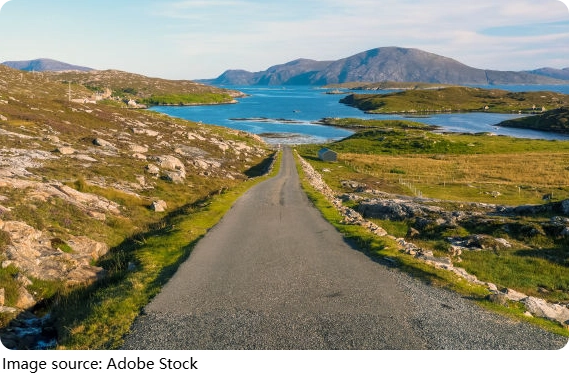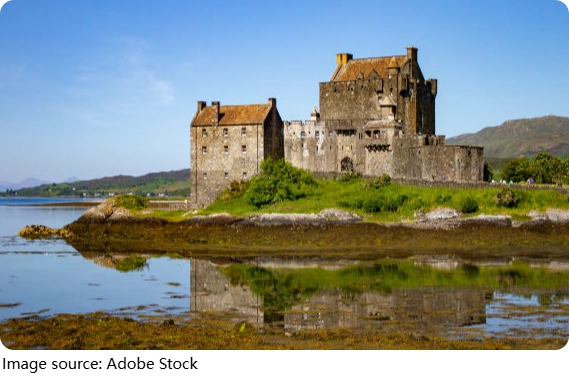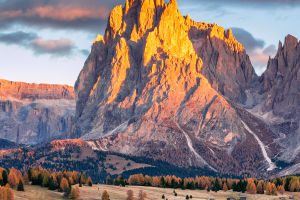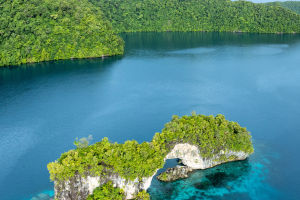Hidden Calm

If someone told you Scotland had white-sand beaches with turquoise water, you might think they were joking. But step onto Luskentyre Beach on the Isle of Harris, and you'll start questioning your travel bucket list.
Forget the tourist-saturated cities—Harris is where calm meets wild. It's not about how many sites you tick off in a day, but how deeply you experience each one. Here's how to make your trip to Harris more than just a pretty detour.
1. Getting There: More Effort, More Reward
The Isle of Harris sits in the Outer Hebrides, off Scotland's west coast. It's not a quick hop, but that's what makes it special.
By Ferry:
Most travelers arrive via the CalMac ferry from Uig (on the Isle of Skye) to Tarbert, Harris's main village. The journey takes about 1 hour and 40 minutes, and a one-way ticket costs around $21 USD for adults and $11 USD for children. Book ahead in summer.
By Air:
You can also fly into Stornoway Airport on nearby Lewis (40 minutes by car from Harris), with flights from Glasgow or Inverness. Car rentals are available on arrival, and driving is essential—public transit is minimal.
2. Beaches You Won't Believe Are in Scotland
Scotland isn't known for sunbathing, but Harris breaks the mold. The beaches here feel untouched—raw, open, and peaceful.
Luskentyre Beach:
Regularly ranked among the top beaches in Europe, Luskentyre is the definition of remote beauty. It's free to access and stretches for miles. Come at low tide and you'll walk on shimmering sands that blend with the sky. There are no cafés or shops, just you and the view.
Seilebost:
Just down the road, this smaller bay is even quieter. The road overlooks the entire beach, so it's also a great stop for dramatic photos if you're short on time.
Scarista:
Backed by rolling hills and dunes, Scarista is often used for surfing. While wetsuits are essential—the water rarely climbs above 57°F (14°C)—the waves are clean and uncrowded.
Tip: Wear layers. Even on sunny days, the wind can be biting, and weather changes quickly.
Harris
3. The Craft Behind the Famous Harris Tweed
Beyond the beaches, Harris has a global identity: Harris Tweed. Unlike most fabrics, it's protected by law—you can't call it "Harris Tweed" unless it's woven in someone's home on the Outer Hebrides.
Visit a weaving shed:
Shops like The Harris Tweed Company Grosebay or Harris Tweed Isle of Harris offer tours or live demos. You'll see how centuries-old methods are still used today, and you can buy directly from the weavers.
Why it matters:
Buying tweed here supports local families who still work with foot-powered looms. It's one of the few crafts in the world still protected by an Act of Parliament.
Expect scarves to start at around $40 USD and jackets around $300 USD—this is heirloom-quality stuff.
4. Where to Eat—and What's Worth Booking
There aren't many restaurants, but the ones that exist care about quality over quantity.
The Machair Kitchen (Seilebost):
With sea views and seasonal menus, this spot is perfect for lunch. Reservations are recommended in summer.
Croft 36 (Northton):
This quirky self-service hut offers home-baked goods, fresh seafood, and handmade pies. You pay via an honesty box—cash is best.
The Anchorage (Leverburgh):
Known for fish fresh off the boats, The Anchorage is one of the southernmost eateries. Call ahead for evening reservations.
5. Tips Most Tourists Don't Know
Summer is popular, but spring and fall are magical.
May and September often have fewer midges (tiny biting insects) and more stable weather. Late June offers the longest daylight—up to 18 hours.
Wild camping is legal—but comes with responsibility.
Scotland allows wild camping, but leave no trace. Stick to small tents, avoid farmland, and respect privacy.
Expect slow travel.
Distances are short, but roads are narrow and winding. Don't rush—part of Harris's charm is how it forces you to slow down.

So Why Choose Harris?
Harris is not for everyone. If you want nightclubs or high-end resorts, skip it. But if you want to feel small in the best way possible—under wide skies, on quiet roads, with beaches that make you question reality—then Harris delivers.
And the best part? Most people still haven't heard of it.
If you've ever been to a place where silence actually has texture, where the air smells like salt and moss, and where time seems to unravel a little—then you'll understand. And if you haven't yet, maybe Harris is the place to start.
Have you experienced a place that felt like it changed your pace of life? I'd love to hear where it was.


